-_22c1d8178a?_a=BAVAfVDW0)
The Evolution Of Chanel’s J12, Explained In 5 Watches
From titanium beasts with NATO straps to a rare variation jointly engineered by the makers of the Royal Oak, these J12s prove Chanel’s best-selling sports watch is more than mere fashion accessory
Earlier this February, we took an extensive look at the intersection between fashion and serious watchmaking, but – owing to pesky considerations of Googleability (that’s a word, right?) – didn’t get around to a discussion of arguably the most influential ‘fashion watch’ of the 20th century – the Chanel J12.
Beyond the matter of the watch itself (i.e. one of the first serial productions to use ceramic to dramatic effect), the J12 feels so vital to Chanel’s history because of what it symbolises.)
The earliest versions launched at the dawn of the New Millenium, but getting these into production had been the culmination of a journey that began almost 10 years prior - when Chanel acquired casemaker G&G Châtelain in 1993.

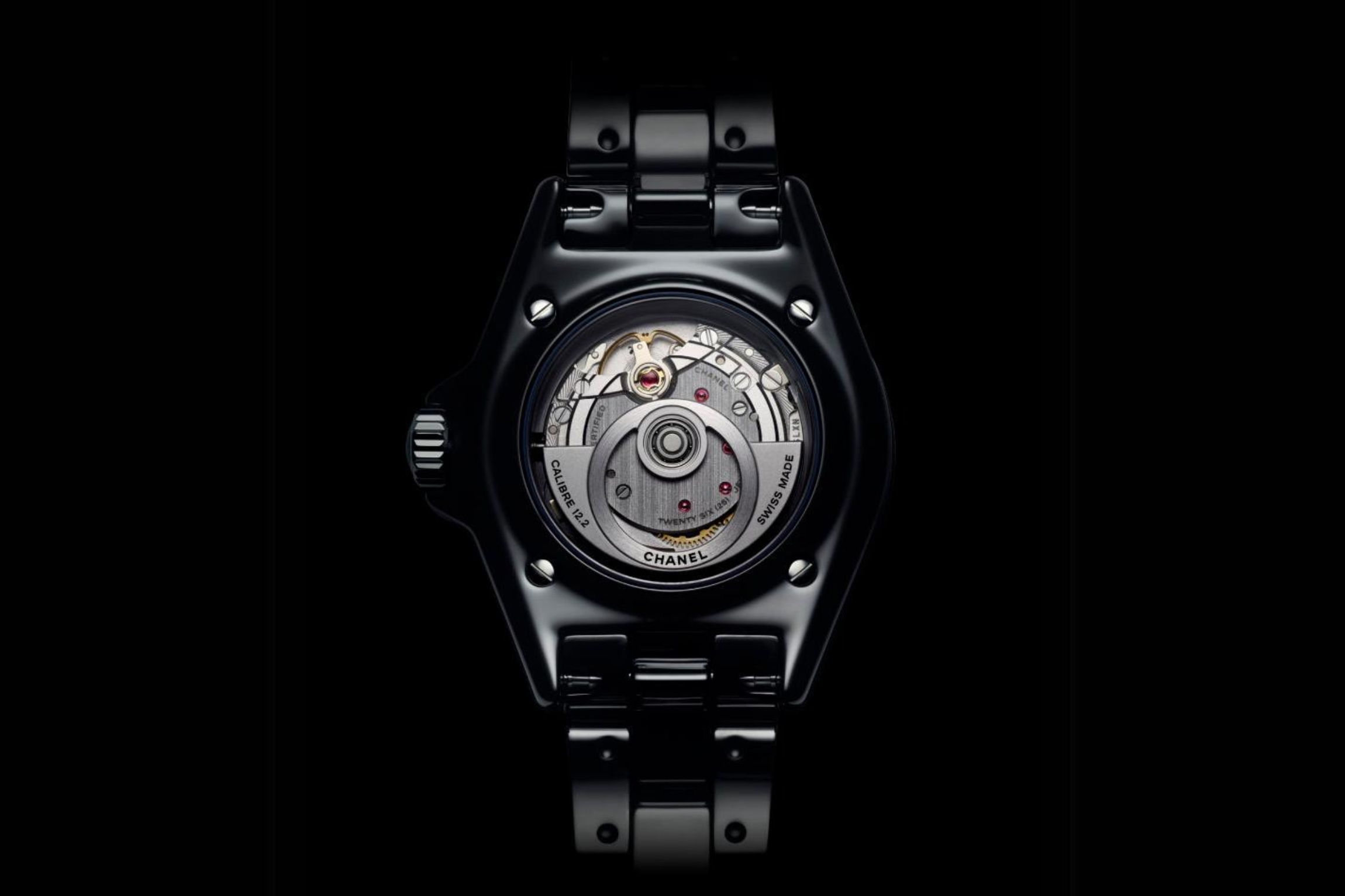
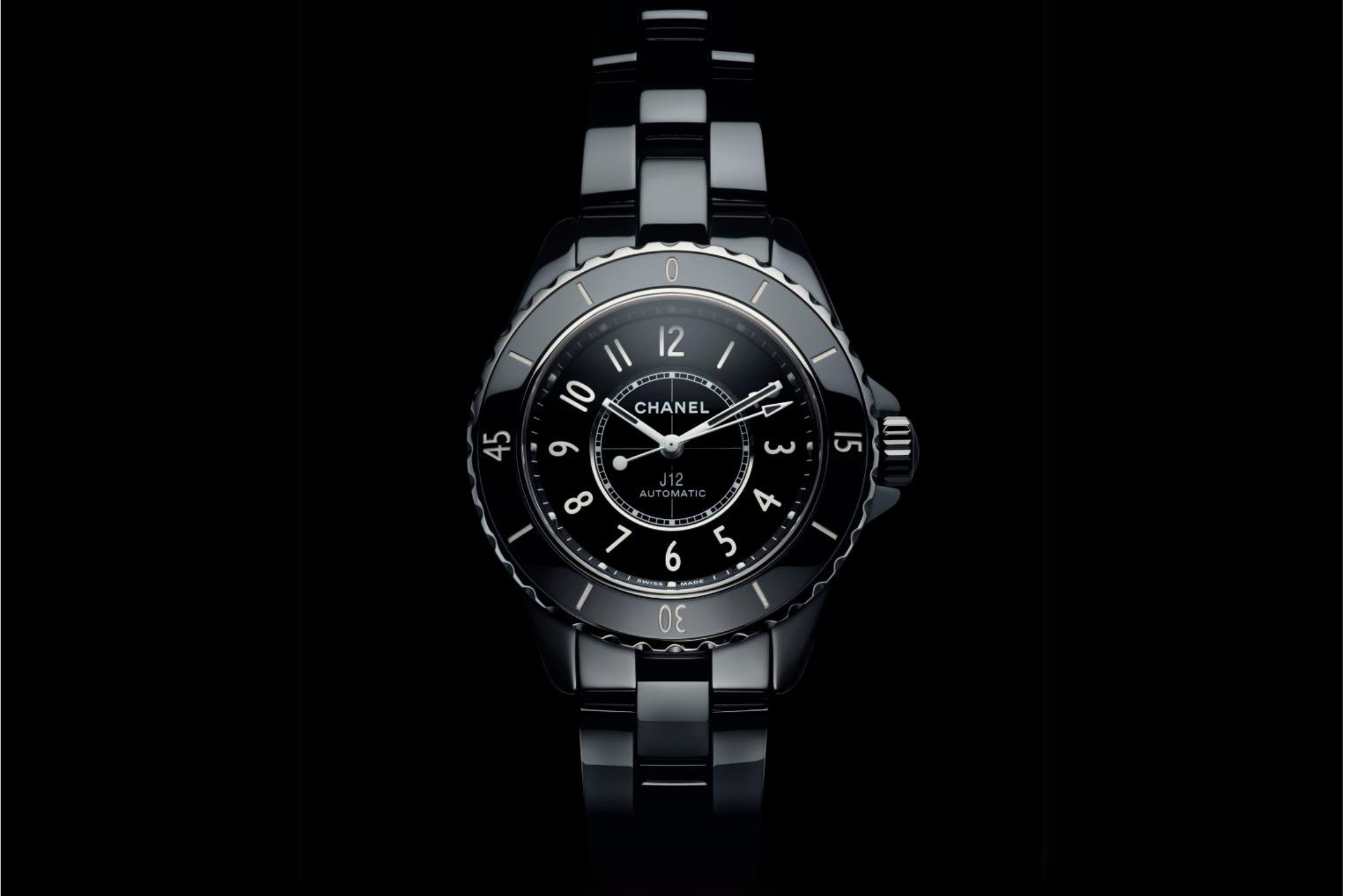
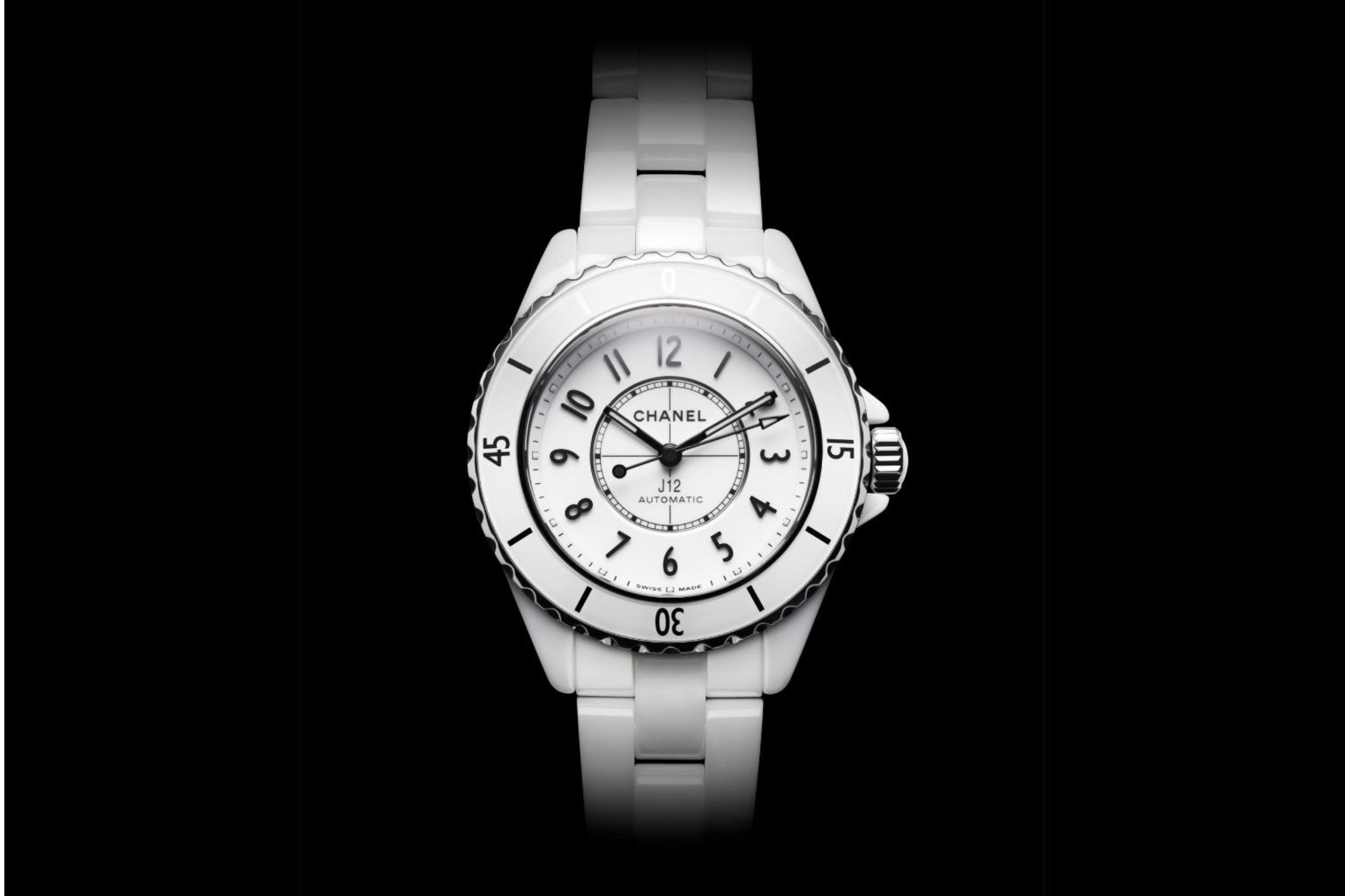

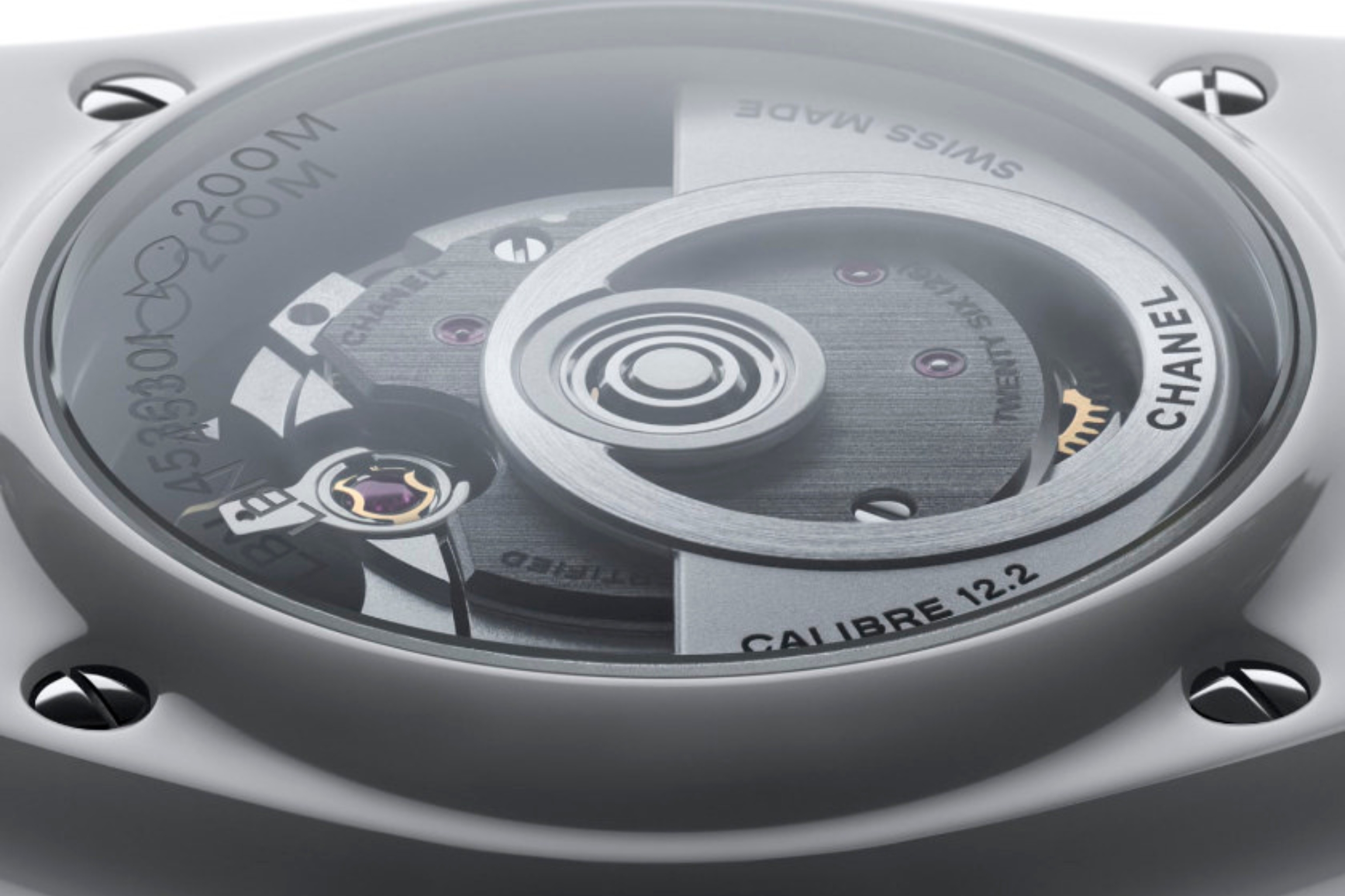
General consumers, at the time, mightn’t have appreciated the boldness of Chanel’s decision. And yet, it tells us much about the high esteem Chanel (a fashion house already renowned for its métiers d’art) attached to mechanical watchmaking. Even during those heady early days: when the gulf between luxury watches and luxury clothing seemed unassailable.
In the ensuing three decades, the Maison has affirmed its commitment to the J12 on numerous occasions – as both a core part of its watch & jewelry business and testbed for horological innovation.
Below, we’ve cherry picked five evolutions of the typical Chanel J12 DNA: all important branches in an ever expanding universe, cementing the fact that – like it or not – this watch is simply iconic.
J12 Superleggera Chronograph H3410 (2005)
1.0-_418549b0c7?_a=BAVAfVDW0)
Released just three years after the first J12 chronographs – an inevitable complication, considering the collection’s conceptual affiliation with J-class racing yachts – the Superleggera (“super light”) brought an unabashedly masculine dimension to Chanel’s signature ceramic sports watch.
Whereas the original design of Jacques Helléu, Chanel Artistic Director, emphasised a confluence of unisex characteristics; the Superleggera was the Maison’s take on what the J12 might look like it if had come of age in a world of Speedmasters and Daytona Cosmographs.
Consequently, this was among the earliest J12 models to illustrate Chanel’s growing proficiency in the technical side of watchmaking. It would be a full 11 years before the brand would realise its first authentically in-house movement, yet the Superleggera was a meaningful step in that direction.
Among collectors of ‘neo-vintage’, there is strong appreciation for the watch’s robust design codes (the aluminum and ceramic construction offers a clever deconstruction of the typical ‘two tone’ look) while the chronograph movement, a derivation of the ETA 2894, was even COSC certified.
Again, today’s enthusiasts routinely regard these details as standard, but in the early 2000s – in the earliest days of ‘serious’ fashion watchmaking – for a couture house to be this fastidious about what went into its watches was unusual by any stretch.
J12 ‘By Audemars Piguet’ H2918 (2008)
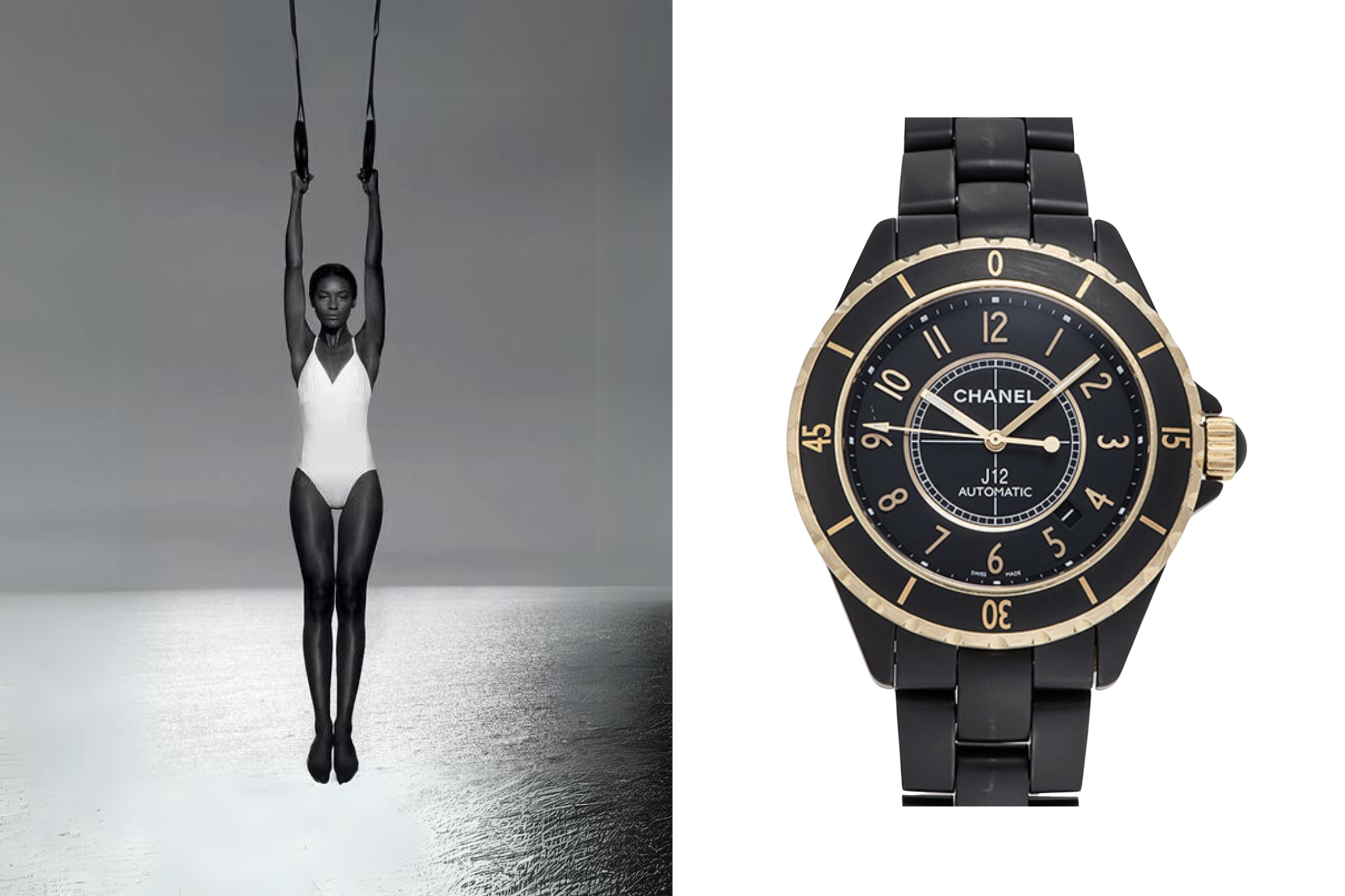
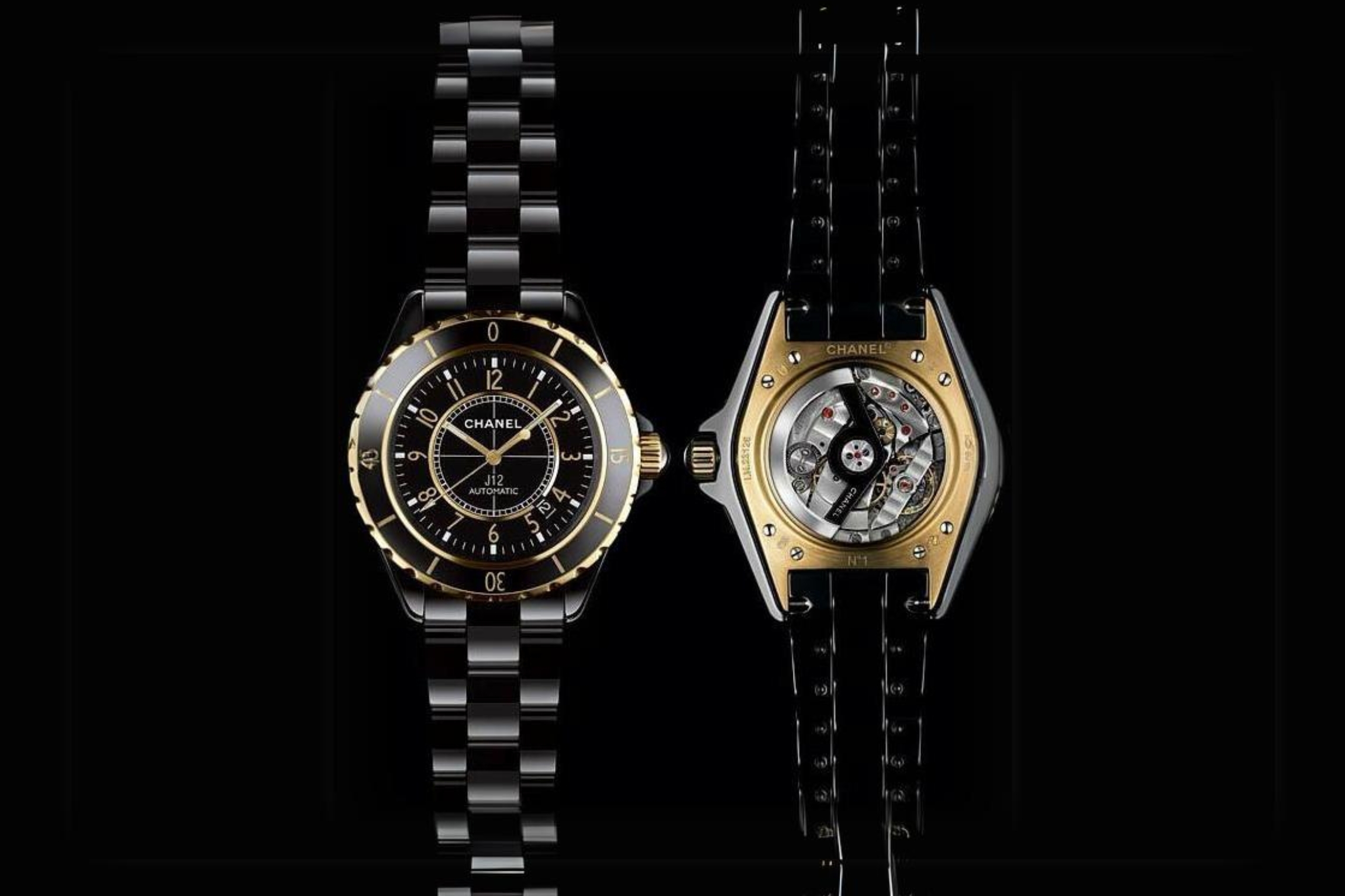
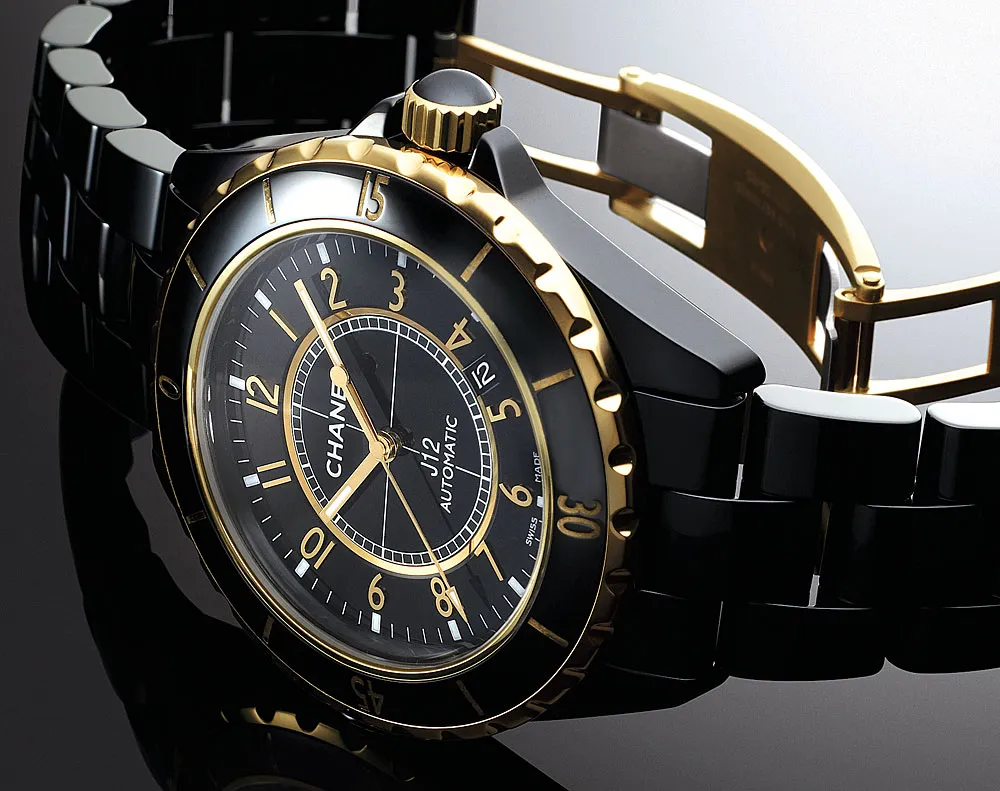
In 2019, not long after purchasing a stake in Kenissi – the high-profile manufacturer that supplies movements to Tudor and Norqain – Chanel began incorporating new COSC-certified movements into the J12 collection.
In actuality, this wasn’t the first time the watch had been outfitted with a radically upgraded engine: for there was a period, give or take about 3 years, in which the J12 was powered by the caliber 3125 – to all intents and purposes, a customized Audemars Piguet caliber still in service with many of the latter’s Offshore Divers today.
A fascinating slice of horological history, the Ref. H2918 brings together two of the most iconic names in consumer luxury (both of whom are, incidentally, private family-owned enterprises). An almost essential inclusion on that basis alone, this 42mm version of the J12 hews closely to the archetypal incarnation of that design: save for a few yellow gold accents deployed in the bezel, crown, dial furniture, and caseback.
Assuming you’re a movement geek, the easiest way to identify the H2918 is via the caseback. Bearing in mind that 2008 was still early days for Chanel’s fine watchmaking division, the major alterations the Maison made were to replace AP’s classic solid gold winding mass with a ceramic equivalent; and simplify the shape of the balance bridge.
J12-G10 Titanium (2014)


Detractors are quick to accuse fashion houses of lacking a sense of humor, yet the J12 ‘G10’ is pretty damning proof that the folks at Montres Chanel do possess a funny bone. A send-up of the heritage workwear trend of the late 2010s (think Red Wing-wearing hipsters, microbrew in hand) the ‘G10’ reimagined the ceramic J12 as a titanium tool watch, fitted on a NATO strap.
It’s not unusual for denizens of the high street – Zara, H&M, et al – to pilfer ideas from the tippy top of fashion; yet this is that rare example of a historic couture house, internalising and then poking fun at the affordable military-inspired timekeepers of the period.
Much like Hermès with its now-famous Apple Watch collab, Chanel’s designers reimagined the NATO strap used in this release far from its humble, ostensibly military roots. When the G10 line originally debuted, a number of models even incorporated keeper loops set with baguette-cut diamonds – a flourish that would have appeared dramatic (were it not for the fact that each ‘NATO’ was made out of alligator leather).
Of the various 33mm, 38mm, and 42mm versions of the G-10 design, the Ref. H4187 appears (to our thinking) to have aged the most gracefully. “It’s the most interesting take,” says Carson Chan - better known by his online moniker ‘The Watch Professor’ - “on what was already a collection of watches renowned for its breadth of variation”.
While most of the G10 range is best understood as a luxe, 5-figure reimagining of the typical NATO design; the H4187 could conceivably go toe to toe with your favourite Hamilton field watch. Not for nothing: the ghostly gray colour palette and 38mm size lend it a distant resemblance to Tudor’s ‘Silver’ Black Bay 58. So, bonus points there too.
J12 ‘X-Ray’ H6249 (2020)
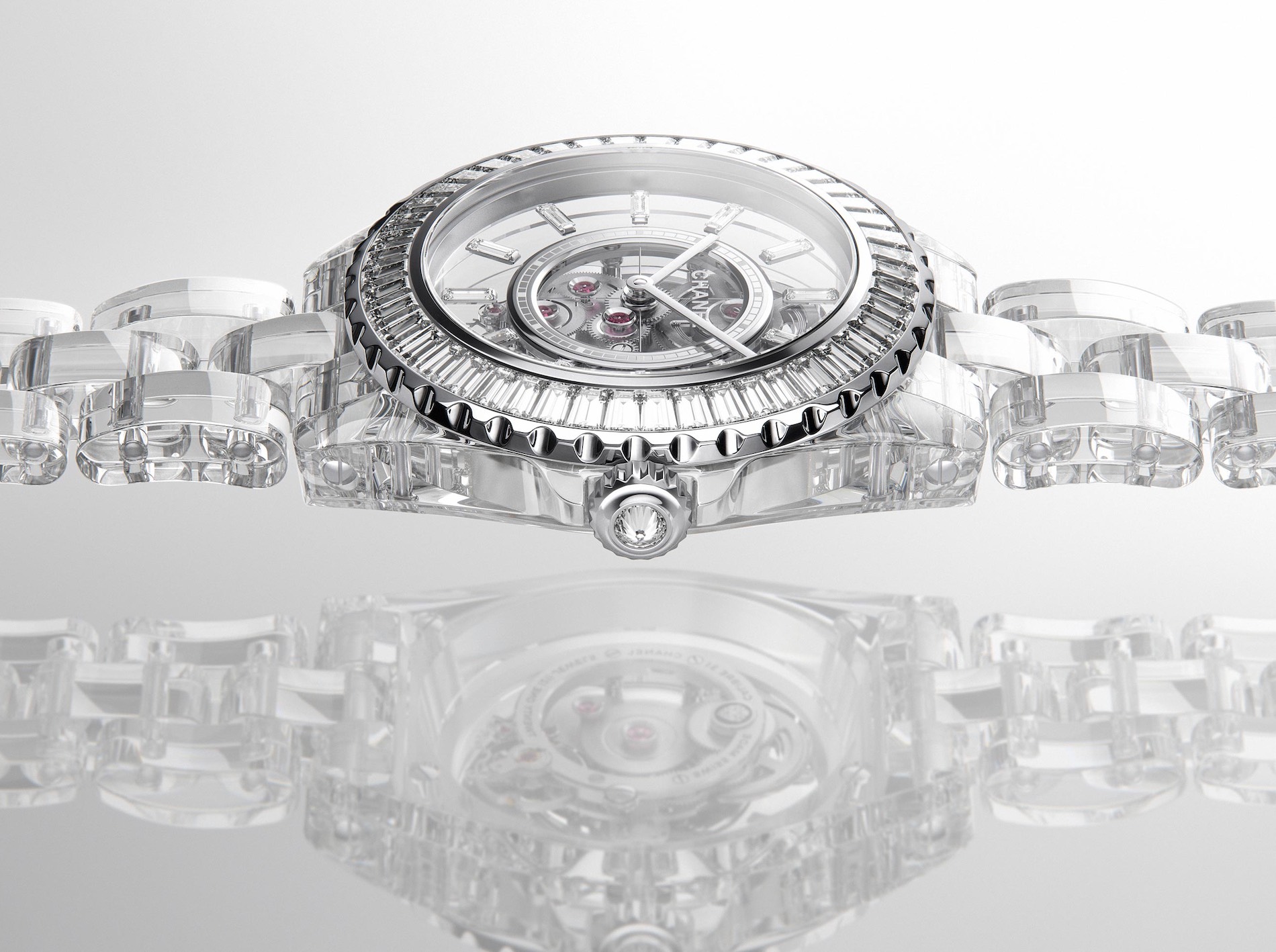
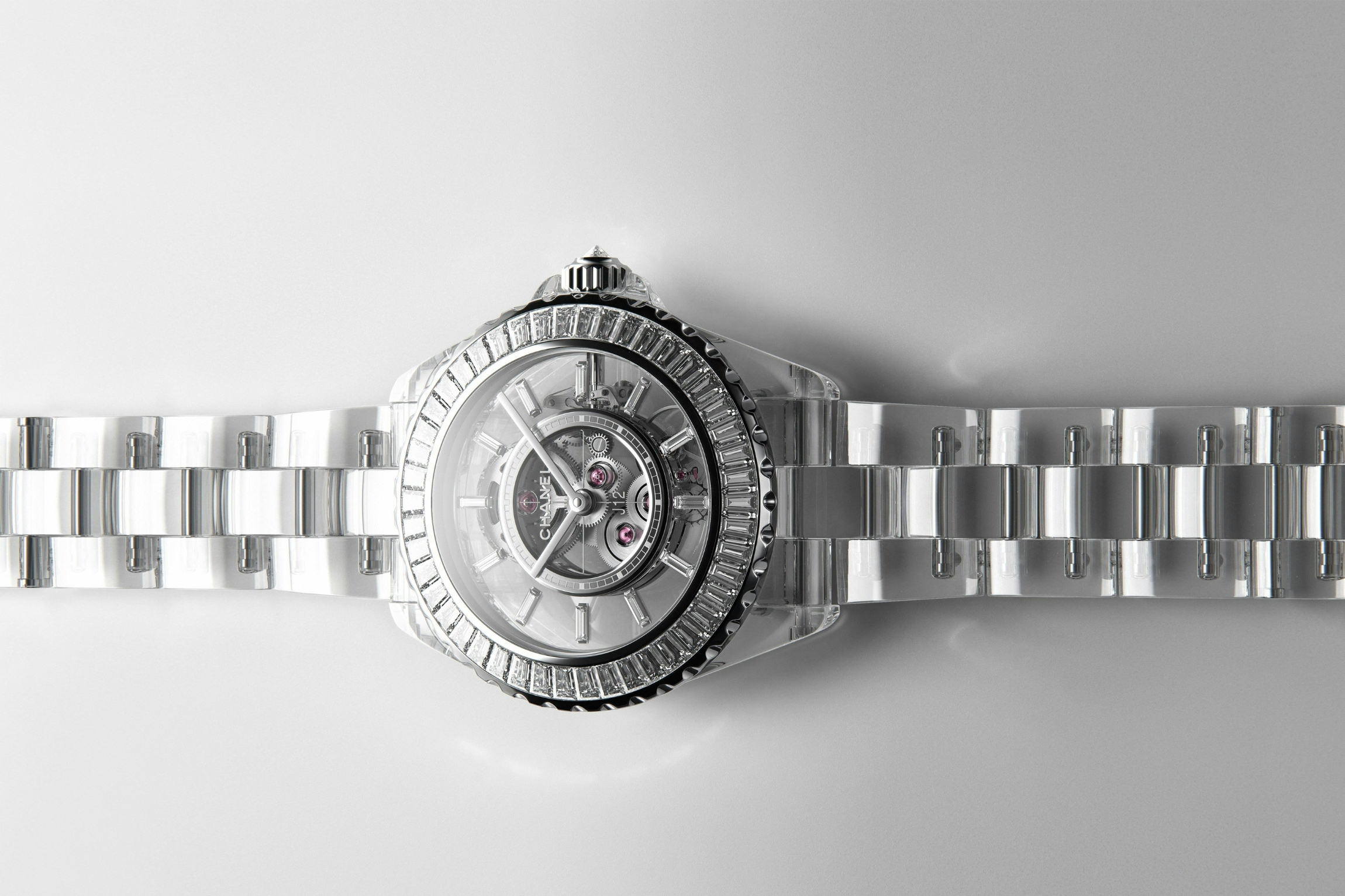
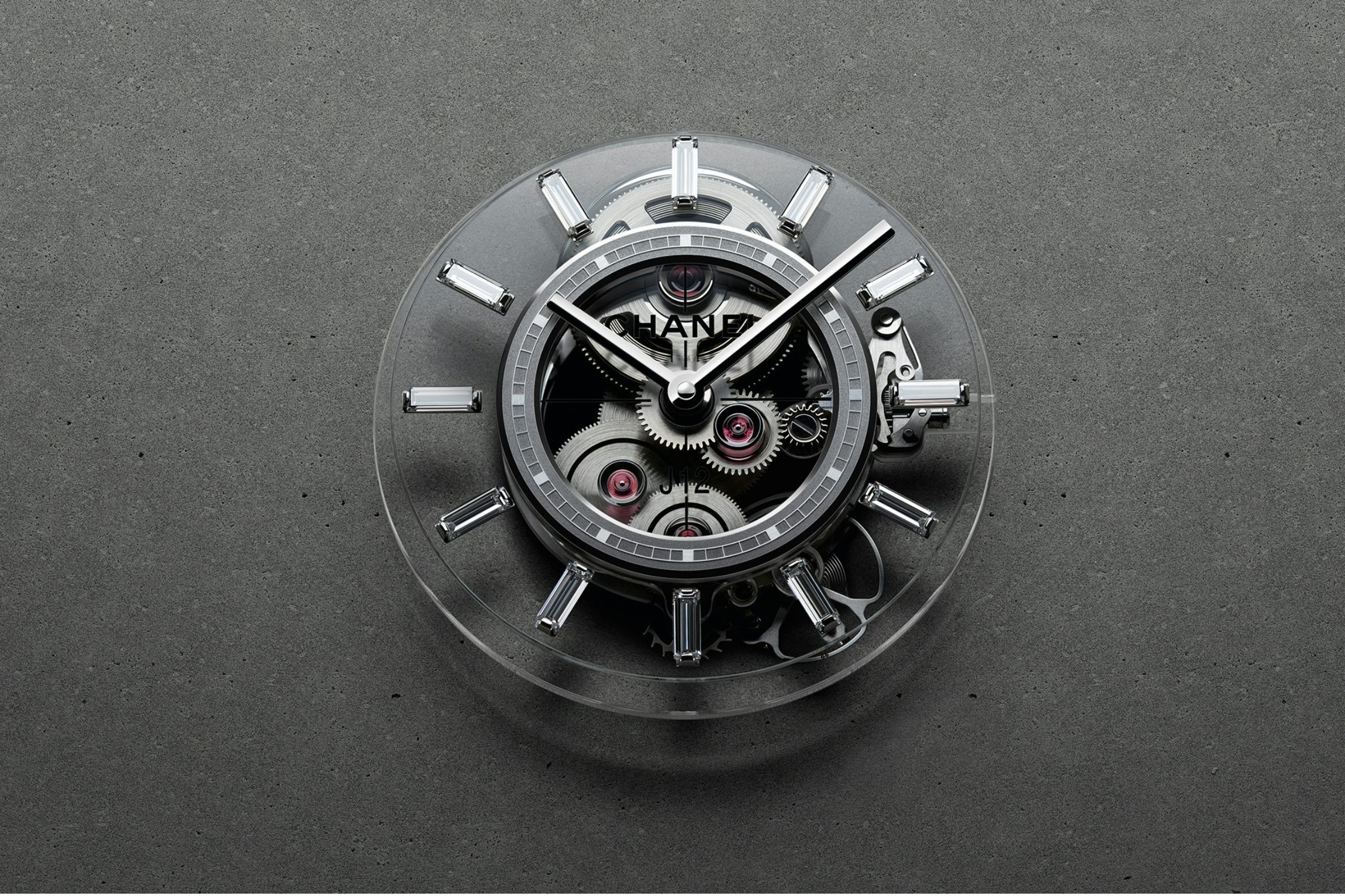
For the 20th anniversary of its best-selling sports watch, Chanel needed to pull out all the stops; and in so doing, the brand settled on the J12 ‘X-Ray’ – a gutsy showcase of material innovation, limited to just 12 pieces worldwide.
Evidently not content to revisit the successes of their past, Chanel’s watchmakers came up with a brand new visual language: conveyed via the medium of sapphire crystal. The result is a watch that is effectively 99% transparent; save for the bezel, which is still sort of see-through thanks to a setting of 46 baguette-cut gems.
If you’ve ever marvelled at the ‘diamond’ ice – carved to order daily at Japanese cocktail dens like Mizunara – this is what I imagine it’s like to wear said formations on your wrist in perpetuity. Even the baseplate securing the X-Ray’s movement is milled out of sapphire.
Mechanical obsessives will note that, oddly, this is not the Kenissi-made Calibre 12.1 that Chanel had debuted (with much fanfare) a year earlier; but rather, a derivation of the very good looking Calibre 3 that the brand had unveiled initially via the BOY ○ FRIEND Skeleton.
J12 ‘Eclipse’ Box Set (2023)
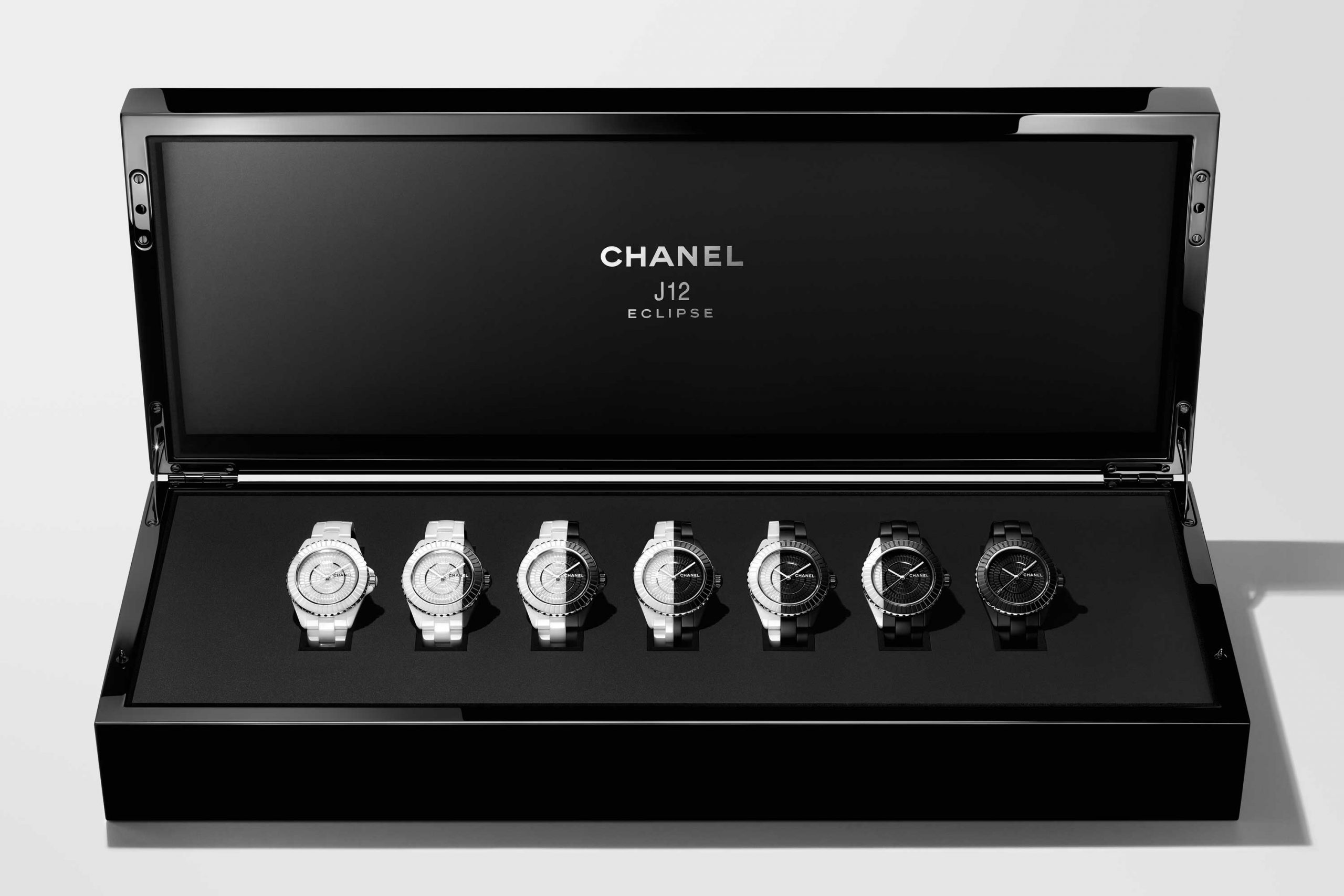
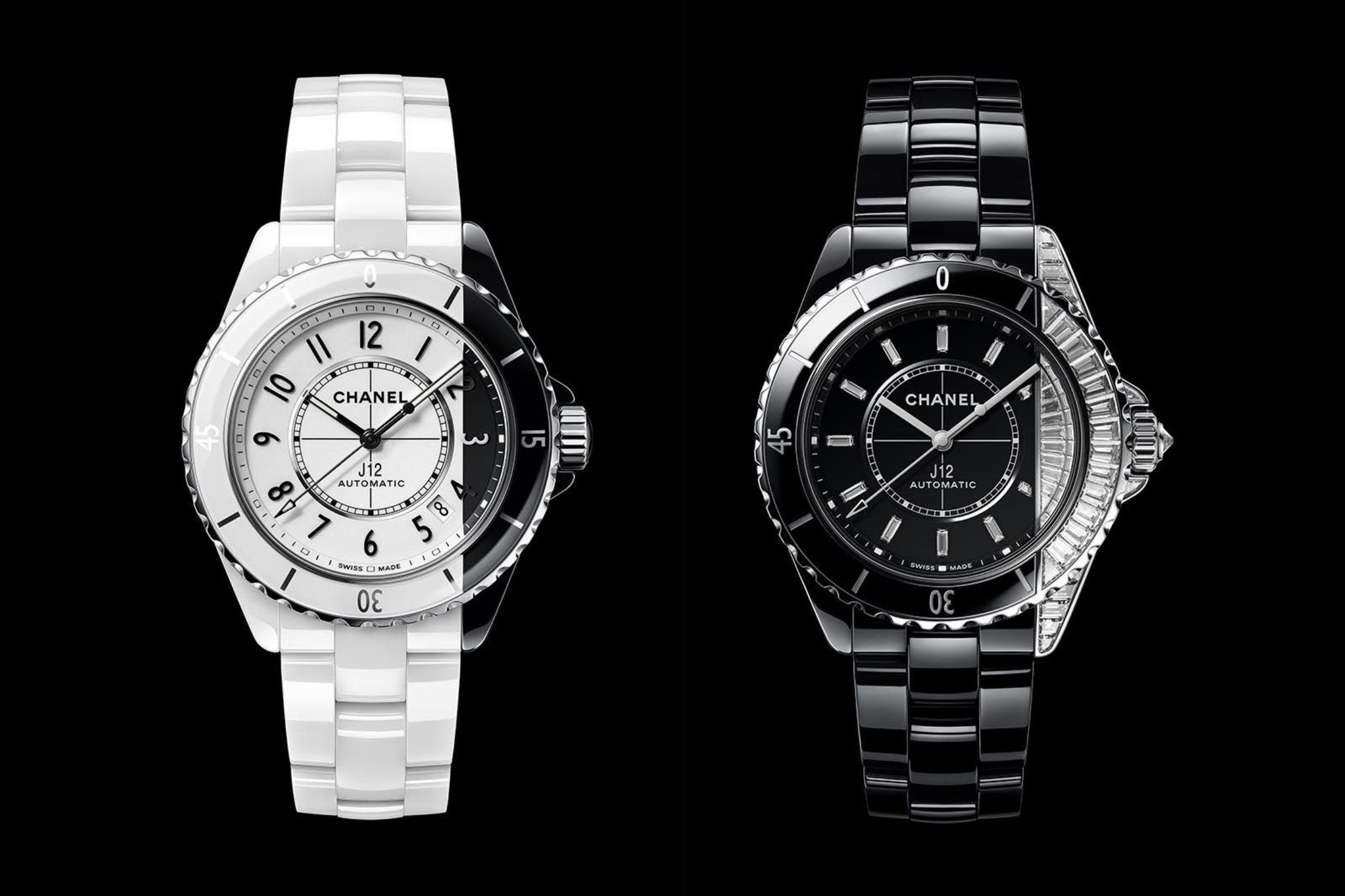
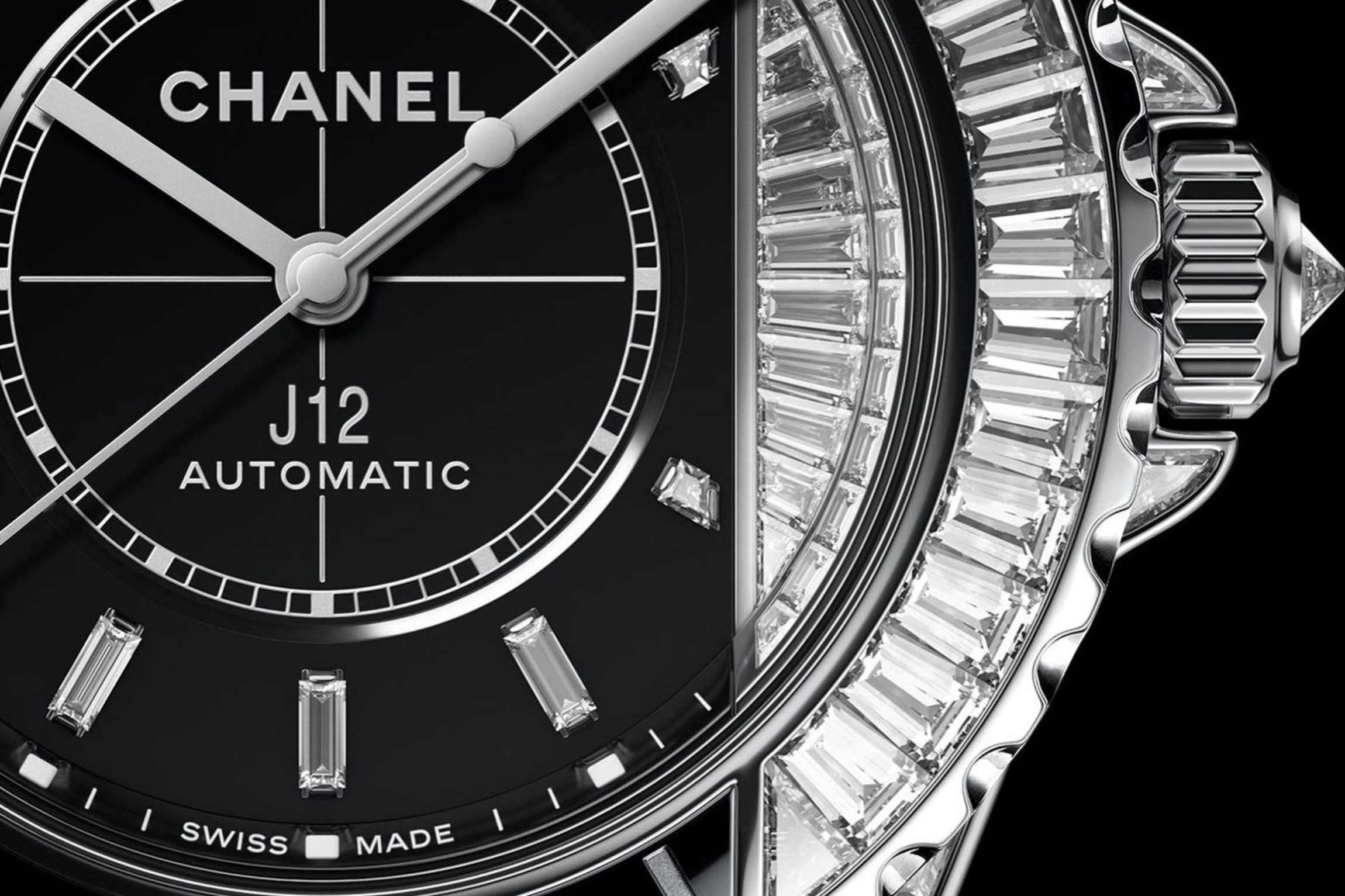
The latest in the J12 collection’s evolutionary journey, the ‘Eclipse’ design is in fact a set of multiple watches. Taken together, these pieces explore the astronomical phenomenon of the same name – utilising a gradient of black and white ceramic, varying between each watch.
While there are certainly other more ‘important’ inclusions on our shortlist, this Eclipse set is the rarest example of the J12 by some margin. Recalling the Ichiro’s Malt Card Series (from the world of auction-worthy whisky) each of the 7 Eclipse watches boasts a totally unique design – and was made available to a single buyer worldwide.
Taking inspiration from earlier J12 models such as the ‘Paradoxe’ and ‘Spatiotemporal’, the real star of the show here is each Eclipse’s dial. In particular, the 4th of the 7 models (featuring a 50:50 ratio of white to black) effectively highlights the baguette-cut technique that has been applied to Chanel’s signature ceramic construction.
Given how baguette cuts are generally perceived as a decorative motif in the world of jewellery, it’s fascinating – and, to be frank, very on-brand – that Chanel has recontextualized them in a totally different setting.
“It’s my favourite release from the J12 collection in quite some time,” says Mark Cho, Co-Founder of The Armoury menswear stores. “From all white to all black, the watches form a complete gradient. It’s also an incredibly imaginative way to make use of ceramic – showcasing a dial formed out of this modern material, using a repetitive baguette pattern."
J12 ‘Couture O’Clock’ Collection (2024)
-_c5b19f3d64?_a=BAVAfVDW0)
A fitting inclusion to finish on – unveiled just ahead of Watches & Wonders 2024 - Chanel’s ‘Couture O’Clock’ collection is the second run of timepieces to be inspired by the motifs and heritage of 31 Rue Cambon – home of Coco Chanel’s first atelier.
Familiar iconography in the Rue Cambon universe (e.g. tweed jackets or quilted pincushioning) has been extrapolated out to a range of different contexts in watchmaking – including cuffs, necklaces, music boxes, and of course, the J12.
Using the canvas of ceramic sports watches, this year Chanel sought to extrapolate the iconography of Rue Cambon with varying degrees of literalness. At the very top of the range, the J12 ‘Couture Workshop’ offers a literal depiction of Mademoiselle Gabrielle: imagined, in the context of this release, as a scissor-wielding automaton. Neha Bagpai, Wristcheck’s Media Director, opined this was “a perfect example of how haute horlogerie can be both sophisticated and fun”.
Having said that, if the prospect of a J12 automaton (limited to 100 pieces globally no less) seems somewhat remote; Chanel also has fashionistas covered with the white ceramic J12 ‘Couture’. Here, conventional design details are substituted with iconic Rue Cambon imagery: such as a handset in the shape of tailor’s shears, and a diving scale that has been decorated to resemble a tape measure.


